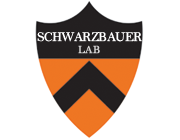The cartilage-specific (V+C)- fibronectin isoform exists primarily in homodimeric and monomeric configurations
Type
Fibronectin is an extracellular-matrix glycoprotein encoded by a single gene, but with significant protein heterogeneity introduced through alternative RNA splicing and post-translational modifications. The (V+C)(-) splice variant, in which nucleotides encoding protein segments III-15 and I-10 are deleted along with the entire variable region, is unique in that expression is restricted to cartilaginous tissues. All known fibronectin splice variants retain the two C-terminal cysteine residues essential for dimerization, but cellular and/or structural constraints appear to influence homo- and heterodimerization patterns. Dimerization patterns of the (V+C)(-) isoform were studied under native conditions within canine articular cartilage and experimentally in COS-7, NIH-3T3 and CHO-K1 cell cultures. In all systems, (V+C)(-) fibronectin secretion was predominantly in a homodimeric configuration. Lower levels of (V+C)(-) monomers were also present. Heterodimers of (V+C)(-) with V(+),C(+) (V120) isoforms were not detected. Heterodimers of (V+C)(-) with V(-),C(+) (V0) subunits were detected only at low levels. Functional properties may differ significantly among monomers, homodimers and heterodimers. The unique dimerization pattern of (V+C)(-) fibronectin is consistent with this isoform having specialized functional properties in situ that are important for either the structural organization and biomechanical properties of cartilage matrix or regulation of a chondrocytic phenotype.

